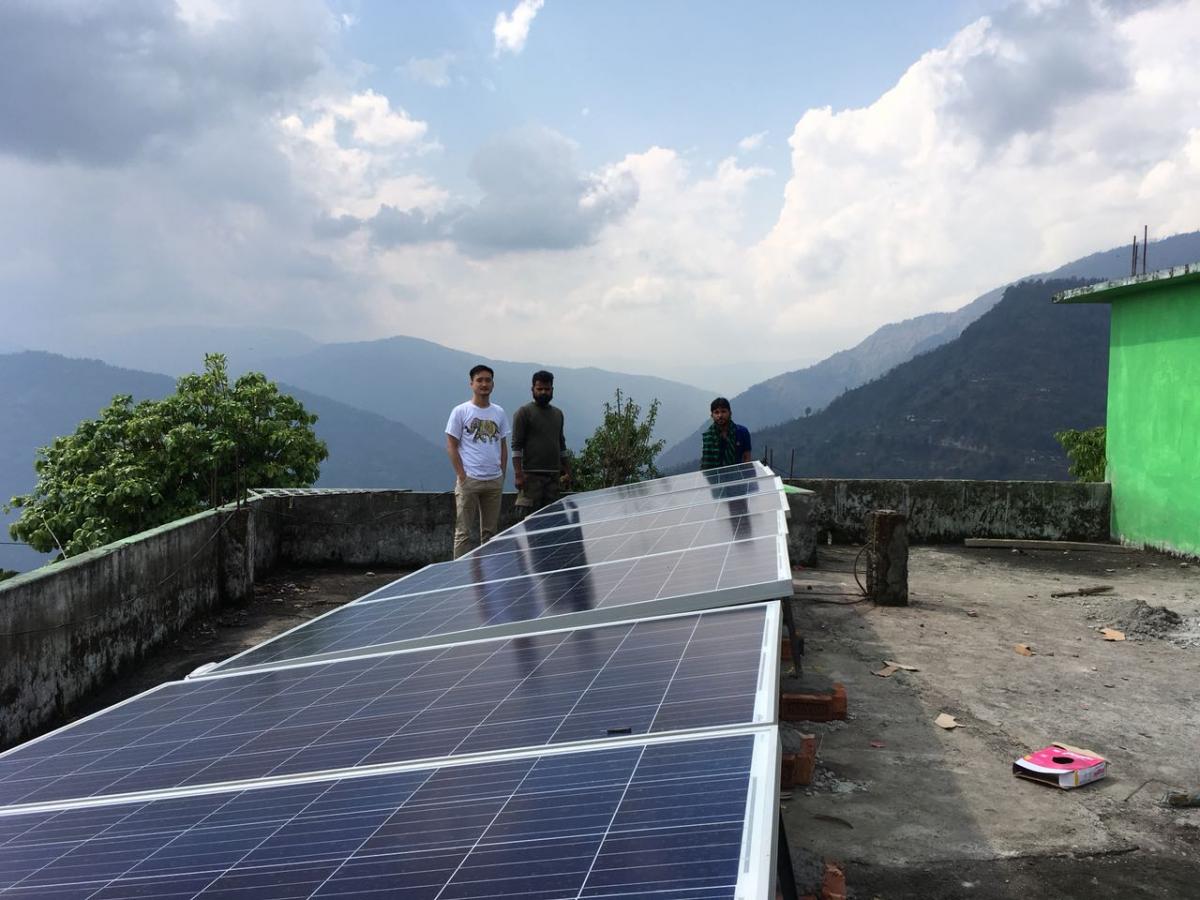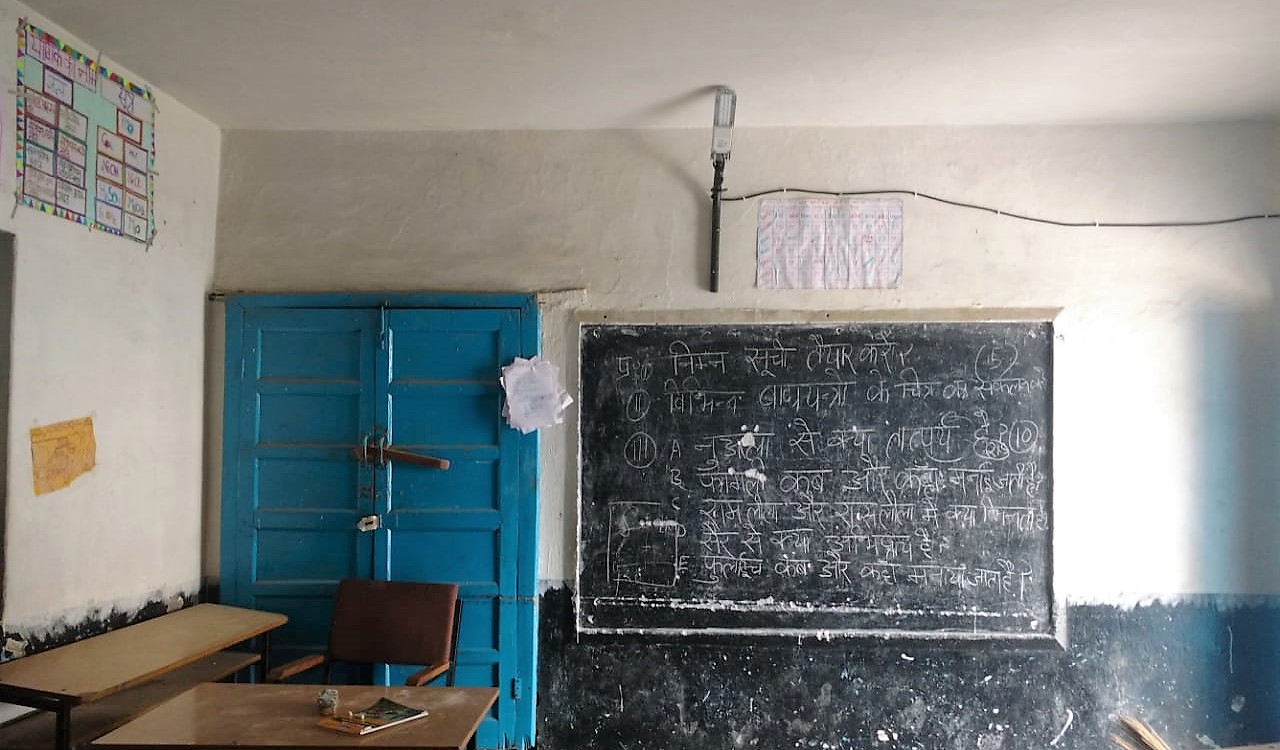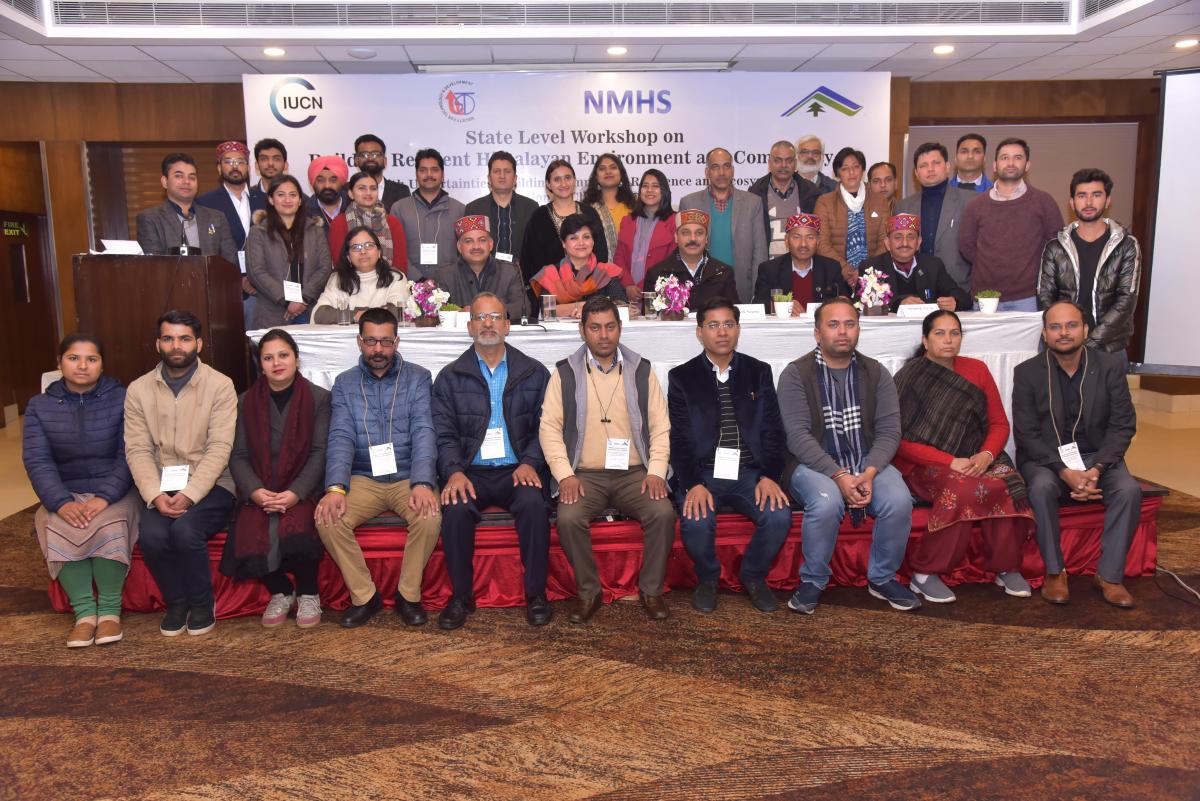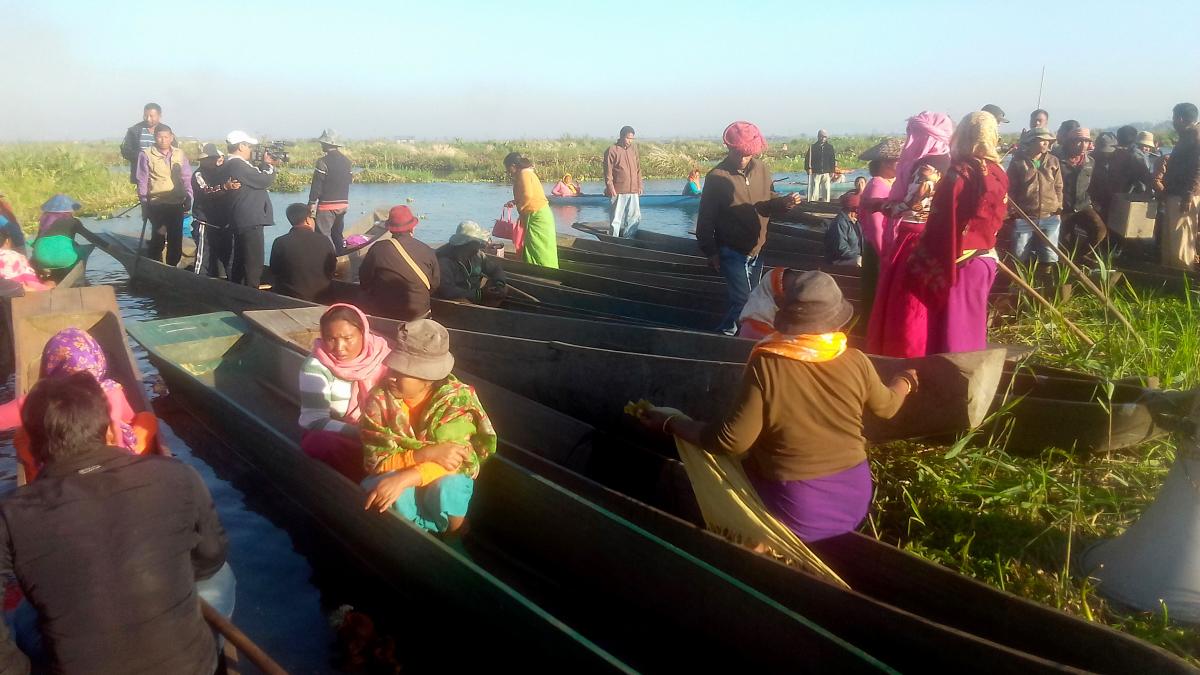Demonstration of decentralized solar energy in the Indian Himalayan states
Under the Government of India’s National Mission on Himalayan Studies (NMHS), IUCN is implementing the project ‘Coping with Uncertainties: Building Community Resilience and Ecosystem Based Adaptation to Climate Change in the Indian Himalayan Region’. As part of its efforts to enhance community-based adaptation to climate change, IUCN with support from technology partner – E-Hands Energy (India) Private Limited intends to promote the use of solar energy as an alternative source of energy for the welfare of Himalayan communities.

Photo: IUCN
Due to rising population and growing tourism pressures, there has been an increase in energy demands across the Indian Himalayas, thus contributing to higher black carbon emissions from the region. The Himalayan region has abundant opportunities to use renewable energy for meeting the growing energy demands and also for contributing towards value-added livelihoods. However, due to extreme climate variability, Himalayan communities suffer huge technological gaps. Therefore, to promote the deployment and use of alternative sources of energy, IUCN along with E- Hands Energy installed solar rooftop systems of 2 KW as demonstration models customised to the unique conditions and requirements of the Himalayas. The solar systems have been installed in project landscapes of Uttarakhand, Himachal Pradesh and Sikkim by following a participatory process.
These systems have been strategically installed in places of common use by local communities, thus exposing a large number of people to the potential of solar energy for lighting, heating and cooking purposes. In Uttarakhand, the solar system has been installed at ‘Chandi Mandir’ in the Village Mandal, from where the famous Chipko movement was launched in the year 1973. The system provides power for lighting fifteen street lights in the village. The operation and maintenance of the system is looked after by a Self Help Group (SHG) in the village.
 Photo: IUCN\ Yogeshwar Kumar
Photo: IUCN\ Yogeshwar Kumar
In Himachal Pradesh, the system has been installed in the Fozal Senior Secondary School of Village Fozal, providing solar powered classrooms to students and lighting the surrounding area of the school. The installation of the model has helped in educating and spreading awareness amongst the students and teachers on the benefits of solar energy usage.
 Photo: IUCN\ Pratishtha Singh
Photo: IUCN\ Pratishtha Singh
In Sikkim, the system has been installed at Gram Prashasan Kendra (GPK) of Mamley-Kamrang Gram Panchayat. Fifteen solar powered street lights have been set up connecting the GPK to a school, a primary health sub-centre and nearly 15 households.
 Photo: IUCN
Photo: IUCN
IUCN’s demonstration of solar technology has been well received by the local Himalayan communities. It has become a model for the communities to understand the potential of solar energy, and has also helped in encouraging adoption of such technologies by the community towards ensuring increased resilience. IUCN has also promoted the use of LED light bulbs in watersheds across each pilot state as a simple and effective action towards ensuring climate change resilience at the local level. Such futuristic interventions and promotion of renewable energy sources may help entrepreneurship development in the hills while checking the out-migration of youth to the plains. Presently, there is a 30% subsidy on renewable energy from the Government of India. Solar technology can be scaled up for communities living in remote areas where grid-available power supply is a big challenge.
For more information of IUCN’s Coping project, please click here.



